title: “10 Types Of Squash Every Gardener Should Know And Grow " ShowToc: true date: “2024-08-30” author: “Eva Brawley”
Historically, various squash types have been used not only as food sources but also as household items. With so many varieties of squash, it’s difficult to narrow it down to 2 or3, which is as much space as most of us have for growing squash in our gardens. Things get even more complex if we consider that squash also refers to watermelons, muskmelons, pumpkins, cucumbers and gourds. For our purposes however, I’m going to narrow it down to two kinds of squash, summer and winter, and discuss the 10 different types of squash I think you should know about and include in your garden.
Common Types of Squash
As mentioned, squash is divided into two common categories: summer and winter varieties. Summer squash are those squash that can be picked throughout the summer when the skin is still soft, immature and edible, while winter squash is harvested when it is mature and the skin is hard, generally late in the summer to early fall. Tender summer squash has another difference from its relative winter squash - it doesn’t keep for nearly as long. Winter squash, with its more impervious rind, can be stored and kept for 1-6 months.
1. Zucchini
Likely the most common of the summer squash, zucchini is a green, thin skinned squash that can be eaten fresh or roasted, sauteed, stuffed or even grated into dessert recipes. Interestingly, the seeds and flowers (stuffed squash blossoms!) are edible as well. Zucchini isn’t only green. It also comes in a brilliant yellow which is much the same flavor, possibly a bit sweeter, than green zucchini. In either case, bigger doesn’t always mean better. The fruit grows rapidly and if you don’t check everyday you may end up with zucchini the size of a baseball bat. Unfortunately, these huge zucchini lack flavor somewhat and the seeds and skin become tough, so pick them when small.
2. Pattypan
So adorable, patty pan squash have a unique scalloped edge and come in green, yellow or a combination of the two hues. They’re great quickly sauteed to keep their crunch, or can be grilled or stuffed depending on their size. This zucchini plant is has virtually no spines, which means you can harvest scratch-free all summer long.
3. Luffa
This one is a bit of a surprise. We’ve all heard of loofah sponges… maybe you even have one in your shower. But did you know they are made from a squash? A loofah sponge is a fully mature luffa squash. The luffa dries as it matures with the skin cracking to reveal the interior of the squash - a loofah sponge fit for scrubbing. These cute one (or two) bite-sized squash top out at 3x2 inches and will fill your garden with a smattering of sunshine. Young luffa look like zucchini with ridges, and they can be eaten raw like a cucumber or used in recipes instead of zucchini.
4. Yellow Squash
Yellow squash comes either as crookneck or straightneck. Crookneck squash looks just like what it sounds like: a yellow squash with a curved neck. It is usually harvested when it is more mature to allow the fruit to form a curved neck. This means this variety has larger seeds and thicker skin than other summer squash varieties. Straightneck squash is the same vibrant yellow color as crookneck but lacking the curved neck. Both have slightly bumpy, yellow skin with white flesh. It can also be cooked and used much like zucchini.
5. Zephyr
Zephyr squash is a dense summer squash, rather similar to patty pan’s texture. It is a hybrid of yellow crookneck and two winter squash - acorn and delicata - so it’s not precisely a summer or a winter squash. This adaptable yellow squash from Park Seed is will make for an explosive harvest in pretty much any climate you throw its way. Zephyr is a two tone squash. Light green at the blossom end and yellow at the top stem end. Its interior is creamy hued with a rich, sweet, nutty flavor. Here again, the leaves and flowers are edible as well.
6. Spaghetti
Spaghetti squash is hands down my favorite winter squash if only because it is nothing like the others. The closest thing the texture resembles is the reason for its name. The interior of this squash is entirely reminiscent of spaghetti - yes, the pasta! And with its mild, neutral flavor, it can be used exactly like it. Its rind ranges from yellow/orange to a lemony yellow. When cooked the creamy flesh separates into stringy spaghetti-like strands. What a way to get the kids to eat their veggies!
7. Kabocha
Kabocha squash or Japanese pumpkin has a bumpy, dark green rind. The bright orange flesh has a rich, buttery flavor. It is a bit starchier but similar to pumpkins, and said to be a cross between a winter squash and sweet potato. This squash plant stays small and is great for containers, but it’s still a prolific producer! Commonly found in Thai and Japanese cuisine, kabocha is getting quite a following elsewhere for its rich almost custardy flesh and sweet, chestnut-like flavor.
8. Carnival
Carnival squash is a small to medium sized squash, round and squat with deep furrowing and festive green and white striping. It is a hybrid of acorn and sweet dumpling squash. It has a sweet, mild flavor similar to butternut and - much like butternut - works well in soups, stews or casseroles.
9. Butternut
Butternut squash is an extremely popular squash notable for being the main ingredient in delectable butternut soup. This nutty squash is at home using a variety of kitchen techniques, but roasting the flesh really elevates the flavor. Butternut is a bottle or pear-shaped squash, tan in color, with a bulbous end and bright orange flesh. Packed with fiber, butternut has a sweet, nutty flavor. It sautes beautifully but best of all, it purees smoothly making it the perfect soup base.
10. Blue Hokkaido
Blue hokkaido squash is actually a type of pumpkin with surprising and very unusual blue/gray skin under which lies brilliantly orange flesh. Subtly sweet and very nutty, it lends itself well to a simple dish of roasted squash with salt and pepper or can be pureed or mashed into sweet bakery items or soups. This article features products available from third-party vendors on the Gardening Know How Shop.
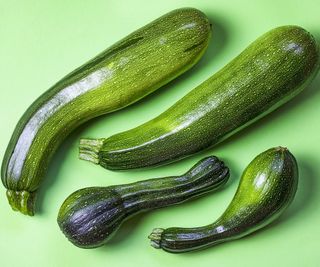
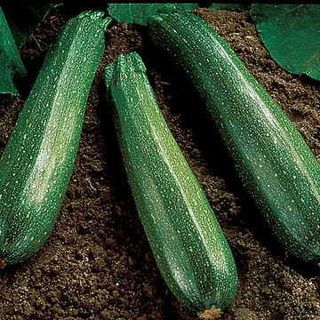
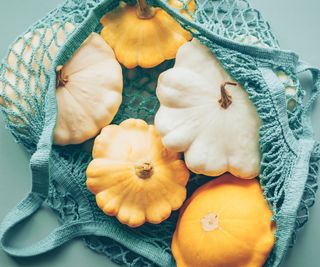
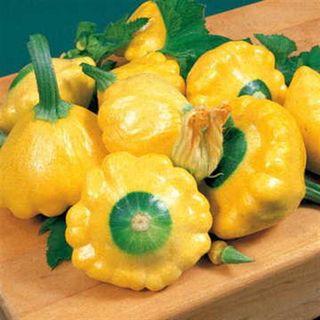
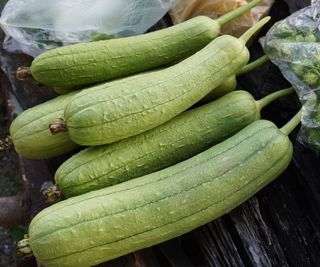
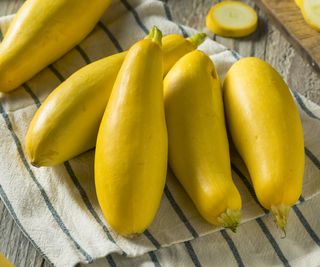
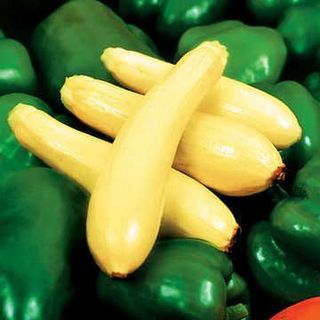
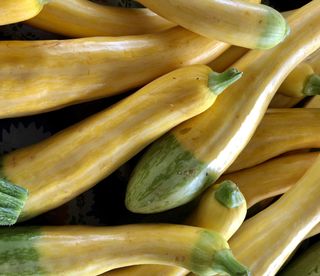
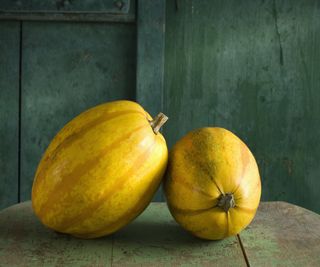
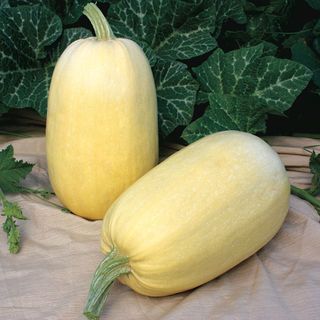
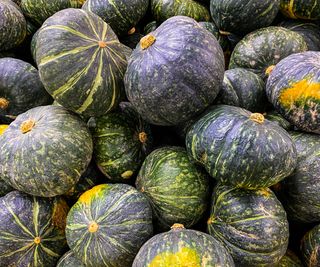
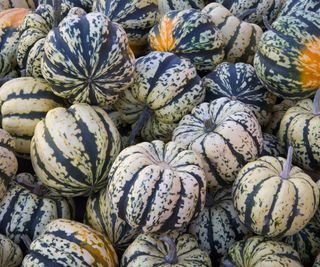
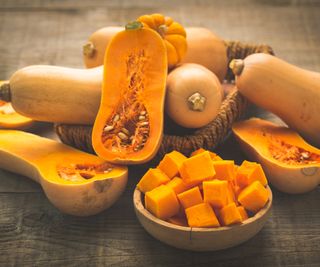
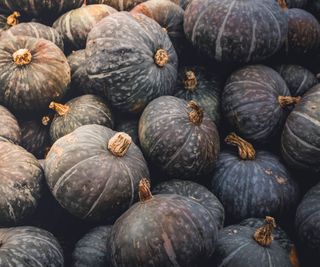
title: “10 Types Of Squash Every Gardener Should Know And Grow " ShowToc: true date: “2024-10-12” author: “Tonya Joslin”
Historically, various squash types have been used not only as food sources but also as household items. With so many varieties of squash, it’s difficult to narrow it down to 2 or3, which is as much space as most of us have for growing squash in our gardens. Things get even more complex if we consider that squash also refers to watermelons, muskmelons, pumpkins, cucumbers and gourds. For our purposes however, I’m going to narrow it down to two kinds of squash, summer and winter, and discuss the 10 different types of squash I think you should know about and include in your garden.
Common Types of Squash
As mentioned, squash is divided into two common categories: summer and winter varieties. Summer squash are those squash that can be picked throughout the summer when the skin is still soft, immature and edible, while winter squash is harvested when it is mature and the skin is hard, generally late in the summer to early fall. Tender summer squash has another difference from its relative winter squash - it doesn’t keep for nearly as long. Winter squash, with its more impervious rind, can be stored and kept for 1-6 months.
1. Zucchini
Likely the most common of the summer squash, zucchini is a green, thin skinned squash that can be eaten fresh or roasted, sauteed, stuffed or even grated into dessert recipes. Interestingly, the seeds and flowers (stuffed squash blossoms!) are edible as well. Zucchini isn’t only green. It also comes in a brilliant yellow which is much the same flavor, possibly a bit sweeter, than green zucchini. In either case, bigger doesn’t always mean better. The fruit grows rapidly and if you don’t check everyday you may end up with zucchini the size of a baseball bat. Unfortunately, these huge zucchini lack flavor somewhat and the seeds and skin become tough, so pick them when small.
2. Pattypan
So adorable, patty pan squash have a unique scalloped edge and come in green, yellow or a combination of the two hues. They’re great quickly sauteed to keep their crunch, or can be grilled or stuffed depending on their size. This zucchini plant is has virtually no spines, which means you can harvest scratch-free all summer long.
3. Luffa
This one is a bit of a surprise. We’ve all heard of loofah sponges… maybe you even have one in your shower. But did you know they are made from a squash? A loofah sponge is a fully mature luffa squash. The luffa dries as it matures with the skin cracking to reveal the interior of the squash - a loofah sponge fit for scrubbing. These cute one (or two) bite-sized squash top out at 3x2 inches and will fill your garden with a smattering of sunshine. Young luffa look like zucchini with ridges, and they can be eaten raw like a cucumber or used in recipes instead of zucchini.
4. Yellow Squash
Yellow squash comes either as crookneck or straightneck. Crookneck squash looks just like what it sounds like: a yellow squash with a curved neck. It is usually harvested when it is more mature to allow the fruit to form a curved neck. This means this variety has larger seeds and thicker skin than other summer squash varieties. Straightneck squash is the same vibrant yellow color as crookneck but lacking the curved neck. Both have slightly bumpy, yellow skin with white flesh. It can also be cooked and used much like zucchini.
5. Zephyr
Zephyr squash is a dense summer squash, rather similar to patty pan’s texture. It is a hybrid of yellow crookneck and two winter squash - acorn and delicata - so it’s not precisely a summer or a winter squash. This adaptable yellow squash from Park Seed is will make for an explosive harvest in pretty much any climate you throw its way. Zephyr is a two tone squash. Light green at the blossom end and yellow at the top stem end. Its interior is creamy hued with a rich, sweet, nutty flavor. Here again, the leaves and flowers are edible as well.
6. Spaghetti
Spaghetti squash is hands down my favorite winter squash if only because it is nothing like the others. The closest thing the texture resembles is the reason for its name. The interior of this squash is entirely reminiscent of spaghetti - yes, the pasta! And with its mild, neutral flavor, it can be used exactly like it. Its rind ranges from yellow/orange to a lemony yellow. When cooked the creamy flesh separates into stringy spaghetti-like strands. What a way to get the kids to eat their veggies!
7. Kabocha
Kabocha squash or Japanese pumpkin has a bumpy, dark green rind. The bright orange flesh has a rich, buttery flavor. It is a bit starchier but similar to pumpkins, and said to be a cross between a winter squash and sweet potato. This squash plant stays small and is great for containers, but it’s still a prolific producer! Commonly found in Thai and Japanese cuisine, kabocha is getting quite a following elsewhere for its rich almost custardy flesh and sweet, chestnut-like flavor.
8. Carnival
Carnival squash is a small to medium sized squash, round and squat with deep furrowing and festive green and white striping. It is a hybrid of acorn and sweet dumpling squash. It has a sweet, mild flavor similar to butternut and - much like butternut - works well in soups, stews or casseroles.
9. Butternut
Butternut squash is an extremely popular squash notable for being the main ingredient in delectable butternut soup. This nutty squash is at home using a variety of kitchen techniques, but roasting the flesh really elevates the flavor. Butternut is a bottle or pear-shaped squash, tan in color, with a bulbous end and bright orange flesh. Packed with fiber, butternut has a sweet, nutty flavor. It sautes beautifully but best of all, it purees smoothly making it the perfect soup base.
10. Blue Hokkaido
Blue hokkaido squash is actually a type of pumpkin with surprising and very unusual blue/gray skin under which lies brilliantly orange flesh. Subtly sweet and very nutty, it lends itself well to a simple dish of roasted squash with salt and pepper or can be pureed or mashed into sweet bakery items or soups. This article features products available from third-party vendors on the Gardening Know How Shop.














title: “10 Types Of Squash Every Gardener Should Know And Grow " ShowToc: true date: “2024-09-15” author: “Michael Mcguire”
Historically, various squash types have been used not only as food sources but also as household items. With so many varieties of squash, it’s difficult to narrow it down to 2 or3, which is as much space as most of us have for growing squash in our gardens. Things get even more complex if we consider that squash also refers to watermelons, muskmelons, pumpkins, cucumbers and gourds. For our purposes however, I’m going to narrow it down to two kinds of squash, summer and winter, and discuss the 10 different types of squash I think you should know about and include in your garden.
Common Types of Squash
As mentioned, squash is divided into two common categories: summer and winter varieties. Summer squash are those squash that can be picked throughout the summer when the skin is still soft, immature and edible, while winter squash is harvested when it is mature and the skin is hard, generally late in the summer to early fall. Tender summer squash has another difference from its relative winter squash - it doesn’t keep for nearly as long. Winter squash, with its more impervious rind, can be stored and kept for 1-6 months.
1. Zucchini
Likely the most common of the summer squash, zucchini is a green, thin skinned squash that can be eaten fresh or roasted, sauteed, stuffed or even grated into dessert recipes. Interestingly, the seeds and flowers (stuffed squash blossoms!) are edible as well. Zucchini isn’t only green. It also comes in a brilliant yellow which is much the same flavor, possibly a bit sweeter, than green zucchini. In either case, bigger doesn’t always mean better. The fruit grows rapidly and if you don’t check everyday you may end up with zucchini the size of a baseball bat. Unfortunately, these huge zucchini lack flavor somewhat and the seeds and skin become tough, so pick them when small.
2. Pattypan
So adorable, patty pan squash have a unique scalloped edge and come in green, yellow or a combination of the two hues. They’re great quickly sauteed to keep their crunch, or can be grilled or stuffed depending on their size. This zucchini plant is has virtually no spines, which means you can harvest scratch-free all summer long.
3. Luffa
This one is a bit of a surprise. We’ve all heard of loofah sponges… maybe you even have one in your shower. But did you know they are made from a squash? A loofah sponge is a fully mature luffa squash. The luffa dries as it matures with the skin cracking to reveal the interior of the squash - a loofah sponge fit for scrubbing. These cute one (or two) bite-sized squash top out at 3x2 inches and will fill your garden with a smattering of sunshine. Young luffa look like zucchini with ridges, and they can be eaten raw like a cucumber or used in recipes instead of zucchini.
4. Yellow Squash
Yellow squash comes either as crookneck or straightneck. Crookneck squash looks just like what it sounds like: a yellow squash with a curved neck. It is usually harvested when it is more mature to allow the fruit to form a curved neck. This means this variety has larger seeds and thicker skin than other summer squash varieties. Straightneck squash is the same vibrant yellow color as crookneck but lacking the curved neck. Both have slightly bumpy, yellow skin with white flesh. It can also be cooked and used much like zucchini.
5. Zephyr
Zephyr squash is a dense summer squash, rather similar to patty pan’s texture. It is a hybrid of yellow crookneck and two winter squash - acorn and delicata - so it’s not precisely a summer or a winter squash. This adaptable yellow squash from Park Seed is will make for an explosive harvest in pretty much any climate you throw its way. Zephyr is a two tone squash. Light green at the blossom end and yellow at the top stem end. Its interior is creamy hued with a rich, sweet, nutty flavor. Here again, the leaves and flowers are edible as well.
6. Spaghetti
Spaghetti squash is hands down my favorite winter squash if only because it is nothing like the others. The closest thing the texture resembles is the reason for its name. The interior of this squash is entirely reminiscent of spaghetti - yes, the pasta! And with its mild, neutral flavor, it can be used exactly like it. Its rind ranges from yellow/orange to a lemony yellow. When cooked the creamy flesh separates into stringy spaghetti-like strands. What a way to get the kids to eat their veggies!
7. Kabocha
Kabocha squash or Japanese pumpkin has a bumpy, dark green rind. The bright orange flesh has a rich, buttery flavor. It is a bit starchier but similar to pumpkins, and said to be a cross between a winter squash and sweet potato. This squash plant stays small and is great for containers, but it’s still a prolific producer! Commonly found in Thai and Japanese cuisine, kabocha is getting quite a following elsewhere for its rich almost custardy flesh and sweet, chestnut-like flavor.
8. Carnival
Carnival squash is a small to medium sized squash, round and squat with deep furrowing and festive green and white striping. It is a hybrid of acorn and sweet dumpling squash. It has a sweet, mild flavor similar to butternut and - much like butternut - works well in soups, stews or casseroles.
9. Butternut
Butternut squash is an extremely popular squash notable for being the main ingredient in delectable butternut soup. This nutty squash is at home using a variety of kitchen techniques, but roasting the flesh really elevates the flavor. Butternut is a bottle or pear-shaped squash, tan in color, with a bulbous end and bright orange flesh. Packed with fiber, butternut has a sweet, nutty flavor. It sautes beautifully but best of all, it purees smoothly making it the perfect soup base.
10. Blue Hokkaido
Blue hokkaido squash is actually a type of pumpkin with surprising and very unusual blue/gray skin under which lies brilliantly orange flesh. Subtly sweet and very nutty, it lends itself well to a simple dish of roasted squash with salt and pepper or can be pureed or mashed into sweet bakery items or soups. This article features products available from third-party vendors on the Gardening Know How Shop.














title: “10 Types Of Squash Every Gardener Should Know And Grow " ShowToc: true date: “2024-10-17” author: “Alicia Morales”
Historically, various squash types have been used not only as food sources but also as household items. With so many varieties of squash, it’s difficult to narrow it down to 2 or3, which is as much space as most of us have for growing squash in our gardens. Things get even more complex if we consider that squash also refers to watermelons, muskmelons, pumpkins, cucumbers and gourds. For our purposes however, I’m going to narrow it down to two kinds of squash, summer and winter, and discuss the 10 different types of squash I think you should know about and include in your garden.
Common Types of Squash
As mentioned, squash is divided into two common categories: summer and winter varieties. Summer squash are those squash that can be picked throughout the summer when the skin is still soft, immature and edible, while winter squash is harvested when it is mature and the skin is hard, generally late in the summer to early fall. Tender summer squash has another difference from its relative winter squash - it doesn’t keep for nearly as long. Winter squash, with its more impervious rind, can be stored and kept for 1-6 months.
1. Zucchini
Likely the most common of the summer squash, zucchini is a green, thin skinned squash that can be eaten fresh or roasted, sauteed, stuffed or even grated into dessert recipes. Interestingly, the seeds and flowers (stuffed squash blossoms!) are edible as well. Zucchini isn’t only green. It also comes in a brilliant yellow which is much the same flavor, possibly a bit sweeter, than green zucchini. In either case, bigger doesn’t always mean better. The fruit grows rapidly and if you don’t check everyday you may end up with zucchini the size of a baseball bat. Unfortunately, these huge zucchini lack flavor somewhat and the seeds and skin become tough, so pick them when small.
2. Pattypan
So adorable, patty pan squash have a unique scalloped edge and come in green, yellow or a combination of the two hues. They’re great quickly sauteed to keep their crunch, or can be grilled or stuffed depending on their size. This zucchini plant is has virtually no spines, which means you can harvest scratch-free all summer long.
3. Luffa
This one is a bit of a surprise. We’ve all heard of loofah sponges… maybe you even have one in your shower. But did you know they are made from a squash? A loofah sponge is a fully mature luffa squash. The luffa dries as it matures with the skin cracking to reveal the interior of the squash - a loofah sponge fit for scrubbing. These cute one (or two) bite-sized squash top out at 3x2 inches and will fill your garden with a smattering of sunshine. Young luffa look like zucchini with ridges, and they can be eaten raw like a cucumber or used in recipes instead of zucchini.
4. Yellow Squash
Yellow squash comes either as crookneck or straightneck. Crookneck squash looks just like what it sounds like: a yellow squash with a curved neck. It is usually harvested when it is more mature to allow the fruit to form a curved neck. This means this variety has larger seeds and thicker skin than other summer squash varieties. Straightneck squash is the same vibrant yellow color as crookneck but lacking the curved neck. Both have slightly bumpy, yellow skin with white flesh. It can also be cooked and used much like zucchini.
5. Zephyr
Zephyr squash is a dense summer squash, rather similar to patty pan’s texture. It is a hybrid of yellow crookneck and two winter squash - acorn and delicata - so it’s not precisely a summer or a winter squash. This adaptable yellow squash from Park Seed is will make for an explosive harvest in pretty much any climate you throw its way. Zephyr is a two tone squash. Light green at the blossom end and yellow at the top stem end. Its interior is creamy hued with a rich, sweet, nutty flavor. Here again, the leaves and flowers are edible as well.
6. Spaghetti
Spaghetti squash is hands down my favorite winter squash if only because it is nothing like the others. The closest thing the texture resembles is the reason for its name. The interior of this squash is entirely reminiscent of spaghetti - yes, the pasta! And with its mild, neutral flavor, it can be used exactly like it. Its rind ranges from yellow/orange to a lemony yellow. When cooked the creamy flesh separates into stringy spaghetti-like strands. What a way to get the kids to eat their veggies!
7. Kabocha
Kabocha squash or Japanese pumpkin has a bumpy, dark green rind. The bright orange flesh has a rich, buttery flavor. It is a bit starchier but similar to pumpkins, and said to be a cross between a winter squash and sweet potato. This squash plant stays small and is great for containers, but it’s still a prolific producer! Commonly found in Thai and Japanese cuisine, kabocha is getting quite a following elsewhere for its rich almost custardy flesh and sweet, chestnut-like flavor.
8. Carnival
Carnival squash is a small to medium sized squash, round and squat with deep furrowing and festive green and white striping. It is a hybrid of acorn and sweet dumpling squash. It has a sweet, mild flavor similar to butternut and - much like butternut - works well in soups, stews or casseroles.
9. Butternut
Butternut squash is an extremely popular squash notable for being the main ingredient in delectable butternut soup. This nutty squash is at home using a variety of kitchen techniques, but roasting the flesh really elevates the flavor. Butternut is a bottle or pear-shaped squash, tan in color, with a bulbous end and bright orange flesh. Packed with fiber, butternut has a sweet, nutty flavor. It sautes beautifully but best of all, it purees smoothly making it the perfect soup base.
10. Blue Hokkaido
Blue hokkaido squash is actually a type of pumpkin with surprising and very unusual blue/gray skin under which lies brilliantly orange flesh. Subtly sweet and very nutty, it lends itself well to a simple dish of roasted squash with salt and pepper or can be pureed or mashed into sweet bakery items or soups. This article features products available from third-party vendors on the Gardening Know How Shop.














title: “10 Types Of Squash Every Gardener Should Know And Grow " ShowToc: true date: “2024-09-02” author: “Robert Waterer”
Historically, various squash types have been used not only as food sources but also as household items. With so many varieties of squash, it’s difficult to narrow it down to 2 or3, which is as much space as most of us have for growing squash in our gardens. Things get even more complex if we consider that squash also refers to watermelons, muskmelons, pumpkins, cucumbers and gourds. For our purposes however, I’m going to narrow it down to two kinds of squash, summer and winter, and discuss the 10 different types of squash I think you should know about and include in your garden.
Common Types of Squash
As mentioned, squash is divided into two common categories: summer and winter varieties. Summer squash are those squash that can be picked throughout the summer when the skin is still soft, immature and edible, while winter squash is harvested when it is mature and the skin is hard, generally late in the summer to early fall. Tender summer squash has another difference from its relative winter squash - it doesn’t keep for nearly as long. Winter squash, with its more impervious rind, can be stored and kept for 1-6 months.
1. Zucchini
Likely the most common of the summer squash, zucchini is a green, thin skinned squash that can be eaten fresh or roasted, sauteed, stuffed or even grated into dessert recipes. Interestingly, the seeds and flowers (stuffed squash blossoms!) are edible as well. Zucchini isn’t only green. It also comes in a brilliant yellow which is much the same flavor, possibly a bit sweeter, than green zucchini. In either case, bigger doesn’t always mean better. The fruit grows rapidly and if you don’t check everyday you may end up with zucchini the size of a baseball bat. Unfortunately, these huge zucchini lack flavor somewhat and the seeds and skin become tough, so pick them when small.
2. Pattypan
So adorable, patty pan squash have a unique scalloped edge and come in green, yellow or a combination of the two hues. They’re great quickly sauteed to keep their crunch, or can be grilled or stuffed depending on their size. This zucchini plant is has virtually no spines, which means you can harvest scratch-free all summer long.
3. Luffa
This one is a bit of a surprise. We’ve all heard of loofah sponges… maybe you even have one in your shower. But did you know they are made from a squash? A loofah sponge is a fully mature luffa squash. The luffa dries as it matures with the skin cracking to reveal the interior of the squash - a loofah sponge fit for scrubbing. These cute one (or two) bite-sized squash top out at 3x2 inches and will fill your garden with a smattering of sunshine. Young luffa look like zucchini with ridges, and they can be eaten raw like a cucumber or used in recipes instead of zucchini.
4. Yellow Squash
Yellow squash comes either as crookneck or straightneck. Crookneck squash looks just like what it sounds like: a yellow squash with a curved neck. It is usually harvested when it is more mature to allow the fruit to form a curved neck. This means this variety has larger seeds and thicker skin than other summer squash varieties. Straightneck squash is the same vibrant yellow color as crookneck but lacking the curved neck. Both have slightly bumpy, yellow skin with white flesh. It can also be cooked and used much like zucchini.
5. Zephyr
Zephyr squash is a dense summer squash, rather similar to patty pan’s texture. It is a hybrid of yellow crookneck and two winter squash - acorn and delicata - so it’s not precisely a summer or a winter squash. This adaptable yellow squash from Park Seed is will make for an explosive harvest in pretty much any climate you throw its way. Zephyr is a two tone squash. Light green at the blossom end and yellow at the top stem end. Its interior is creamy hued with a rich, sweet, nutty flavor. Here again, the leaves and flowers are edible as well.
6. Spaghetti
Spaghetti squash is hands down my favorite winter squash if only because it is nothing like the others. The closest thing the texture resembles is the reason for its name. The interior of this squash is entirely reminiscent of spaghetti - yes, the pasta! And with its mild, neutral flavor, it can be used exactly like it. Its rind ranges from yellow/orange to a lemony yellow. When cooked the creamy flesh separates into stringy spaghetti-like strands. What a way to get the kids to eat their veggies!
7. Kabocha
Kabocha squash or Japanese pumpkin has a bumpy, dark green rind. The bright orange flesh has a rich, buttery flavor. It is a bit starchier but similar to pumpkins, and said to be a cross between a winter squash and sweet potato. This squash plant stays small and is great for containers, but it’s still a prolific producer! Commonly found in Thai and Japanese cuisine, kabocha is getting quite a following elsewhere for its rich almost custardy flesh and sweet, chestnut-like flavor.
8. Carnival
Carnival squash is a small to medium sized squash, round and squat with deep furrowing and festive green and white striping. It is a hybrid of acorn and sweet dumpling squash. It has a sweet, mild flavor similar to butternut and - much like butternut - works well in soups, stews or casseroles.
9. Butternut
Butternut squash is an extremely popular squash notable for being the main ingredient in delectable butternut soup. This nutty squash is at home using a variety of kitchen techniques, but roasting the flesh really elevates the flavor. Butternut is a bottle or pear-shaped squash, tan in color, with a bulbous end and bright orange flesh. Packed with fiber, butternut has a sweet, nutty flavor. It sautes beautifully but best of all, it purees smoothly making it the perfect soup base.
10. Blue Hokkaido
Blue hokkaido squash is actually a type of pumpkin with surprising and very unusual blue/gray skin under which lies brilliantly orange flesh. Subtly sweet and very nutty, it lends itself well to a simple dish of roasted squash with salt and pepper or can be pureed or mashed into sweet bakery items or soups. This article features products available from third-party vendors on the Gardening Know How Shop.














title: “10 Types Of Squash Every Gardener Should Know And Grow " ShowToc: true date: “2024-10-16” author: “Veda Moe”
Historically, various squash types have been used not only as food sources but also as household items. With so many varieties of squash, it’s difficult to narrow it down to 2 or3, which is as much space as most of us have for growing squash in our gardens. Things get even more complex if we consider that squash also refers to watermelons, muskmelons, pumpkins, cucumbers and gourds. For our purposes however, I’m going to narrow it down to two kinds of squash, summer and winter, and discuss the 10 different types of squash I think you should know about and include in your garden.
Common Types of Squash
As mentioned, squash is divided into two common categories: summer and winter varieties. Summer squash are those squash that can be picked throughout the summer when the skin is still soft, immature and edible, while winter squash is harvested when it is mature and the skin is hard, generally late in the summer to early fall. Tender summer squash has another difference from its relative winter squash - it doesn’t keep for nearly as long. Winter squash, with its more impervious rind, can be stored and kept for 1-6 months.
1. Zucchini
Likely the most common of the summer squash, zucchini is a green, thin skinned squash that can be eaten fresh or roasted, sauteed, stuffed or even grated into dessert recipes. Interestingly, the seeds and flowers (stuffed squash blossoms!) are edible as well. Zucchini isn’t only green. It also comes in a brilliant yellow which is much the same flavor, possibly a bit sweeter, than green zucchini. In either case, bigger doesn’t always mean better. The fruit grows rapidly and if you don’t check everyday you may end up with zucchini the size of a baseball bat. Unfortunately, these huge zucchini lack flavor somewhat and the seeds and skin become tough, so pick them when small.
2. Pattypan
So adorable, patty pan squash have a unique scalloped edge and come in green, yellow or a combination of the two hues. They’re great quickly sauteed to keep their crunch, or can be grilled or stuffed depending on their size. This zucchini plant is has virtually no spines, which means you can harvest scratch-free all summer long.
3. Luffa
This one is a bit of a surprise. We’ve all heard of loofah sponges… maybe you even have one in your shower. But did you know they are made from a squash? A loofah sponge is a fully mature luffa squash. The luffa dries as it matures with the skin cracking to reveal the interior of the squash - a loofah sponge fit for scrubbing. These cute one (or two) bite-sized squash top out at 3x2 inches and will fill your garden with a smattering of sunshine. Young luffa look like zucchini with ridges, and they can be eaten raw like a cucumber or used in recipes instead of zucchini.
4. Yellow Squash
Yellow squash comes either as crookneck or straightneck. Crookneck squash looks just like what it sounds like: a yellow squash with a curved neck. It is usually harvested when it is more mature to allow the fruit to form a curved neck. This means this variety has larger seeds and thicker skin than other summer squash varieties. Straightneck squash is the same vibrant yellow color as crookneck but lacking the curved neck. Both have slightly bumpy, yellow skin with white flesh. It can also be cooked and used much like zucchini.
5. Zephyr
Zephyr squash is a dense summer squash, rather similar to patty pan’s texture. It is a hybrid of yellow crookneck and two winter squash - acorn and delicata - so it’s not precisely a summer or a winter squash. This adaptable yellow squash from Park Seed is will make for an explosive harvest in pretty much any climate you throw its way. Zephyr is a two tone squash. Light green at the blossom end and yellow at the top stem end. Its interior is creamy hued with a rich, sweet, nutty flavor. Here again, the leaves and flowers are edible as well.
6. Spaghetti
Spaghetti squash is hands down my favorite winter squash if only because it is nothing like the others. The closest thing the texture resembles is the reason for its name. The interior of this squash is entirely reminiscent of spaghetti - yes, the pasta! And with its mild, neutral flavor, it can be used exactly like it. Its rind ranges from yellow/orange to a lemony yellow. When cooked the creamy flesh separates into stringy spaghetti-like strands. What a way to get the kids to eat their veggies!
7. Kabocha
Kabocha squash or Japanese pumpkin has a bumpy, dark green rind. The bright orange flesh has a rich, buttery flavor. It is a bit starchier but similar to pumpkins, and said to be a cross between a winter squash and sweet potato. This squash plant stays small and is great for containers, but it’s still a prolific producer! Commonly found in Thai and Japanese cuisine, kabocha is getting quite a following elsewhere for its rich almost custardy flesh and sweet, chestnut-like flavor.
8. Carnival
Carnival squash is a small to medium sized squash, round and squat with deep furrowing and festive green and white striping. It is a hybrid of acorn and sweet dumpling squash. It has a sweet, mild flavor similar to butternut and - much like butternut - works well in soups, stews or casseroles.
9. Butternut
Butternut squash is an extremely popular squash notable for being the main ingredient in delectable butternut soup. This nutty squash is at home using a variety of kitchen techniques, but roasting the flesh really elevates the flavor. Butternut is a bottle or pear-shaped squash, tan in color, with a bulbous end and bright orange flesh. Packed with fiber, butternut has a sweet, nutty flavor. It sautes beautifully but best of all, it purees smoothly making it the perfect soup base.
10. Blue Hokkaido
Blue hokkaido squash is actually a type of pumpkin with surprising and very unusual blue/gray skin under which lies brilliantly orange flesh. Subtly sweet and very nutty, it lends itself well to a simple dish of roasted squash with salt and pepper or can be pureed or mashed into sweet bakery items or soups. This article features products available from third-party vendors on the Gardening Know How Shop.














title: “10 Types Of Squash Every Gardener Should Know And Grow " ShowToc: true date: “2024-08-25” author: “William Silva”
Historically, various squash types have been used not only as food sources but also as household items. With so many varieties of squash, it’s difficult to narrow it down to 2 or3, which is as much space as most of us have for growing squash in our gardens. Things get even more complex if we consider that squash also refers to watermelons, muskmelons, pumpkins, cucumbers and gourds. For our purposes however, I’m going to narrow it down to two kinds of squash, summer and winter, and discuss the 10 different types of squash I think you should know about and include in your garden.
Common Types of Squash
As mentioned, squash is divided into two common categories: summer and winter varieties. Summer squash are those squash that can be picked throughout the summer when the skin is still soft, immature and edible, while winter squash is harvested when it is mature and the skin is hard, generally late in the summer to early fall. Tender summer squash has another difference from its relative winter squash - it doesn’t keep for nearly as long. Winter squash, with its more impervious rind, can be stored and kept for 1-6 months.
1. Zucchini
Likely the most common of the summer squash, zucchini is a green, thin skinned squash that can be eaten fresh or roasted, sauteed, stuffed or even grated into dessert recipes. Interestingly, the seeds and flowers (stuffed squash blossoms!) are edible as well. Zucchini isn’t only green. It also comes in a brilliant yellow which is much the same flavor, possibly a bit sweeter, than green zucchini. In either case, bigger doesn’t always mean better. The fruit grows rapidly and if you don’t check everyday you may end up with zucchini the size of a baseball bat. Unfortunately, these huge zucchini lack flavor somewhat and the seeds and skin become tough, so pick them when small.
2. Pattypan
So adorable, patty pan squash have a unique scalloped edge and come in green, yellow or a combination of the two hues. They’re great quickly sauteed to keep their crunch, or can be grilled or stuffed depending on their size. This zucchini plant is has virtually no spines, which means you can harvest scratch-free all summer long.
3. Luffa
This one is a bit of a surprise. We’ve all heard of loofah sponges… maybe you even have one in your shower. But did you know they are made from a squash? A loofah sponge is a fully mature luffa squash. The luffa dries as it matures with the skin cracking to reveal the interior of the squash - a loofah sponge fit for scrubbing. These cute one (or two) bite-sized squash top out at 3x2 inches and will fill your garden with a smattering of sunshine. Young luffa look like zucchini with ridges, and they can be eaten raw like a cucumber or used in recipes instead of zucchini.
4. Yellow Squash
Yellow squash comes either as crookneck or straightneck. Crookneck squash looks just like what it sounds like: a yellow squash with a curved neck. It is usually harvested when it is more mature to allow the fruit to form a curved neck. This means this variety has larger seeds and thicker skin than other summer squash varieties. Straightneck squash is the same vibrant yellow color as crookneck but lacking the curved neck. Both have slightly bumpy, yellow skin with white flesh. It can also be cooked and used much like zucchini.
5. Zephyr
Zephyr squash is a dense summer squash, rather similar to patty pan’s texture. It is a hybrid of yellow crookneck and two winter squash - acorn and delicata - so it’s not precisely a summer or a winter squash. This adaptable yellow squash from Park Seed is will make for an explosive harvest in pretty much any climate you throw its way. Zephyr is a two tone squash. Light green at the blossom end and yellow at the top stem end. Its interior is creamy hued with a rich, sweet, nutty flavor. Here again, the leaves and flowers are edible as well.
6. Spaghetti
Spaghetti squash is hands down my favorite winter squash if only because it is nothing like the others. The closest thing the texture resembles is the reason for its name. The interior of this squash is entirely reminiscent of spaghetti - yes, the pasta! And with its mild, neutral flavor, it can be used exactly like it. Its rind ranges from yellow/orange to a lemony yellow. When cooked the creamy flesh separates into stringy spaghetti-like strands. What a way to get the kids to eat their veggies!
7. Kabocha
Kabocha squash or Japanese pumpkin has a bumpy, dark green rind. The bright orange flesh has a rich, buttery flavor. It is a bit starchier but similar to pumpkins, and said to be a cross between a winter squash and sweet potato. This squash plant stays small and is great for containers, but it’s still a prolific producer! Commonly found in Thai and Japanese cuisine, kabocha is getting quite a following elsewhere for its rich almost custardy flesh and sweet, chestnut-like flavor.
8. Carnival
Carnival squash is a small to medium sized squash, round and squat with deep furrowing and festive green and white striping. It is a hybrid of acorn and sweet dumpling squash. It has a sweet, mild flavor similar to butternut and - much like butternut - works well in soups, stews or casseroles.
9. Butternut
Butternut squash is an extremely popular squash notable for being the main ingredient in delectable butternut soup. This nutty squash is at home using a variety of kitchen techniques, but roasting the flesh really elevates the flavor. Butternut is a bottle or pear-shaped squash, tan in color, with a bulbous end and bright orange flesh. Packed with fiber, butternut has a sweet, nutty flavor. It sautes beautifully but best of all, it purees smoothly making it the perfect soup base.
10. Blue Hokkaido
Blue hokkaido squash is actually a type of pumpkin with surprising and very unusual blue/gray skin under which lies brilliantly orange flesh. Subtly sweet and very nutty, it lends itself well to a simple dish of roasted squash with salt and pepper or can be pureed or mashed into sweet bakery items or soups. This article features products available from third-party vendors on the Gardening Know How Shop.














title: “10 Types Of Squash Every Gardener Should Know And Grow " ShowToc: true date: “2024-08-28” author: “Anthony Tenneson”
Historically, various squash types have been used not only as food sources but also as household items. With so many varieties of squash, it’s difficult to narrow it down to 2 or3, which is as much space as most of us have for growing squash in our gardens. Things get even more complex if we consider that squash also refers to watermelons, muskmelons, pumpkins, cucumbers and gourds. For our purposes however, I’m going to narrow it down to two kinds of squash, summer and winter, and discuss the 10 different types of squash I think you should know about and include in your garden.
Common Types of Squash
As mentioned, squash is divided into two common categories: summer and winter varieties. Summer squash are those squash that can be picked throughout the summer when the skin is still soft, immature and edible, while winter squash is harvested when it is mature and the skin is hard, generally late in the summer to early fall. Tender summer squash has another difference from its relative winter squash - it doesn’t keep for nearly as long. Winter squash, with its more impervious rind, can be stored and kept for 1-6 months.
1. Zucchini
Likely the most common of the summer squash, zucchini is a green, thin skinned squash that can be eaten fresh or roasted, sauteed, stuffed or even grated into dessert recipes. Interestingly, the seeds and flowers (stuffed squash blossoms!) are edible as well. Zucchini isn’t only green. It also comes in a brilliant yellow which is much the same flavor, possibly a bit sweeter, than green zucchini. In either case, bigger doesn’t always mean better. The fruit grows rapidly and if you don’t check everyday you may end up with zucchini the size of a baseball bat. Unfortunately, these huge zucchini lack flavor somewhat and the seeds and skin become tough, so pick them when small.
2. Pattypan
So adorable, patty pan squash have a unique scalloped edge and come in green, yellow or a combination of the two hues. They’re great quickly sauteed to keep their crunch, or can be grilled or stuffed depending on their size. This zucchini plant is has virtually no spines, which means you can harvest scratch-free all summer long.
3. Luffa
This one is a bit of a surprise. We’ve all heard of loofah sponges… maybe you even have one in your shower. But did you know they are made from a squash? A loofah sponge is a fully mature luffa squash. The luffa dries as it matures with the skin cracking to reveal the interior of the squash - a loofah sponge fit for scrubbing. These cute one (or two) bite-sized squash top out at 3x2 inches and will fill your garden with a smattering of sunshine. Young luffa look like zucchini with ridges, and they can be eaten raw like a cucumber or used in recipes instead of zucchini.
4. Yellow Squash
Yellow squash comes either as crookneck or straightneck. Crookneck squash looks just like what it sounds like: a yellow squash with a curved neck. It is usually harvested when it is more mature to allow the fruit to form a curved neck. This means this variety has larger seeds and thicker skin than other summer squash varieties. Straightneck squash is the same vibrant yellow color as crookneck but lacking the curved neck. Both have slightly bumpy, yellow skin with white flesh. It can also be cooked and used much like zucchini.
5. Zephyr
Zephyr squash is a dense summer squash, rather similar to patty pan’s texture. It is a hybrid of yellow crookneck and two winter squash - acorn and delicata - so it’s not precisely a summer or a winter squash. This adaptable yellow squash from Park Seed is will make for an explosive harvest in pretty much any climate you throw its way. Zephyr is a two tone squash. Light green at the blossom end and yellow at the top stem end. Its interior is creamy hued with a rich, sweet, nutty flavor. Here again, the leaves and flowers are edible as well.
6. Spaghetti
Spaghetti squash is hands down my favorite winter squash if only because it is nothing like the others. The closest thing the texture resembles is the reason for its name. The interior of this squash is entirely reminiscent of spaghetti - yes, the pasta! And with its mild, neutral flavor, it can be used exactly like it. Its rind ranges from yellow/orange to a lemony yellow. When cooked the creamy flesh separates into stringy spaghetti-like strands. What a way to get the kids to eat their veggies!
7. Kabocha
Kabocha squash or Japanese pumpkin has a bumpy, dark green rind. The bright orange flesh has a rich, buttery flavor. It is a bit starchier but similar to pumpkins, and said to be a cross between a winter squash and sweet potato. This squash plant stays small and is great for containers, but it’s still a prolific producer! Commonly found in Thai and Japanese cuisine, kabocha is getting quite a following elsewhere for its rich almost custardy flesh and sweet, chestnut-like flavor.
8. Carnival
Carnival squash is a small to medium sized squash, round and squat with deep furrowing and festive green and white striping. It is a hybrid of acorn and sweet dumpling squash. It has a sweet, mild flavor similar to butternut and - much like butternut - works well in soups, stews or casseroles.
9. Butternut
Butternut squash is an extremely popular squash notable for being the main ingredient in delectable butternut soup. This nutty squash is at home using a variety of kitchen techniques, but roasting the flesh really elevates the flavor. Butternut is a bottle or pear-shaped squash, tan in color, with a bulbous end and bright orange flesh. Packed with fiber, butternut has a sweet, nutty flavor. It sautes beautifully but best of all, it purees smoothly making it the perfect soup base.
10. Blue Hokkaido
Blue hokkaido squash is actually a type of pumpkin with surprising and very unusual blue/gray skin under which lies brilliantly orange flesh. Subtly sweet and very nutty, it lends itself well to a simple dish of roasted squash with salt and pepper or can be pureed or mashed into sweet bakery items or soups. This article features products available from third-party vendors on the Gardening Know How Shop.














title: “10 Types Of Squash Every Gardener Should Know And Grow " ShowToc: true date: “2024-08-30” author: “Robert Joyner”
Historically, various squash types have been used not only as food sources but also as household items. With so many varieties of squash, it’s difficult to narrow it down to 2 or3, which is as much space as most of us have for growing squash in our gardens. Things get even more complex if we consider that squash also refers to watermelons, muskmelons, pumpkins, cucumbers and gourds. For our purposes however, I’m going to narrow it down to two kinds of squash, summer and winter, and discuss the 10 different types of squash I think you should know about and include in your garden.
Common Types of Squash
As mentioned, squash is divided into two common categories: summer and winter varieties. Summer squash are those squash that can be picked throughout the summer when the skin is still soft, immature and edible, while winter squash is harvested when it is mature and the skin is hard, generally late in the summer to early fall. Tender summer squash has another difference from its relative winter squash - it doesn’t keep for nearly as long. Winter squash, with its more impervious rind, can be stored and kept for 1-6 months.
1. Zucchini
Likely the most common of the summer squash, zucchini is a green, thin skinned squash that can be eaten fresh or roasted, sauteed, stuffed or even grated into dessert recipes. Interestingly, the seeds and flowers (stuffed squash blossoms!) are edible as well. Zucchini isn’t only green. It also comes in a brilliant yellow which is much the same flavor, possibly a bit sweeter, than green zucchini. In either case, bigger doesn’t always mean better. The fruit grows rapidly and if you don’t check everyday you may end up with zucchini the size of a baseball bat. Unfortunately, these huge zucchini lack flavor somewhat and the seeds and skin become tough, so pick them when small.
2. Pattypan
So adorable, patty pan squash have a unique scalloped edge and come in green, yellow or a combination of the two hues. They’re great quickly sauteed to keep their crunch, or can be grilled or stuffed depending on their size. This zucchini plant is has virtually no spines, which means you can harvest scratch-free all summer long.
3. Luffa
This one is a bit of a surprise. We’ve all heard of loofah sponges… maybe you even have one in your shower. But did you know they are made from a squash? A loofah sponge is a fully mature luffa squash. The luffa dries as it matures with the skin cracking to reveal the interior of the squash - a loofah sponge fit for scrubbing. These cute one (or two) bite-sized squash top out at 3x2 inches and will fill your garden with a smattering of sunshine. Young luffa look like zucchini with ridges, and they can be eaten raw like a cucumber or used in recipes instead of zucchini.
4. Yellow Squash
Yellow squash comes either as crookneck or straightneck. Crookneck squash looks just like what it sounds like: a yellow squash with a curved neck. It is usually harvested when it is more mature to allow the fruit to form a curved neck. This means this variety has larger seeds and thicker skin than other summer squash varieties. Straightneck squash is the same vibrant yellow color as crookneck but lacking the curved neck. Both have slightly bumpy, yellow skin with white flesh. It can also be cooked and used much like zucchini.
5. Zephyr
Zephyr squash is a dense summer squash, rather similar to patty pan’s texture. It is a hybrid of yellow crookneck and two winter squash - acorn and delicata - so it’s not precisely a summer or a winter squash. This adaptable yellow squash from Park Seed is will make for an explosive harvest in pretty much any climate you throw its way. Zephyr is a two tone squash. Light green at the blossom end and yellow at the top stem end. Its interior is creamy hued with a rich, sweet, nutty flavor. Here again, the leaves and flowers are edible as well.
6. Spaghetti
Spaghetti squash is hands down my favorite winter squash if only because it is nothing like the others. The closest thing the texture resembles is the reason for its name. The interior of this squash is entirely reminiscent of spaghetti - yes, the pasta! And with its mild, neutral flavor, it can be used exactly like it. Its rind ranges from yellow/orange to a lemony yellow. When cooked the creamy flesh separates into stringy spaghetti-like strands. What a way to get the kids to eat their veggies!
7. Kabocha
Kabocha squash or Japanese pumpkin has a bumpy, dark green rind. The bright orange flesh has a rich, buttery flavor. It is a bit starchier but similar to pumpkins, and said to be a cross between a winter squash and sweet potato. This squash plant stays small and is great for containers, but it’s still a prolific producer! Commonly found in Thai and Japanese cuisine, kabocha is getting quite a following elsewhere for its rich almost custardy flesh and sweet, chestnut-like flavor.
8. Carnival
Carnival squash is a small to medium sized squash, round and squat with deep furrowing and festive green and white striping. It is a hybrid of acorn and sweet dumpling squash. It has a sweet, mild flavor similar to butternut and - much like butternut - works well in soups, stews or casseroles.
9. Butternut
Butternut squash is an extremely popular squash notable for being the main ingredient in delectable butternut soup. This nutty squash is at home using a variety of kitchen techniques, but roasting the flesh really elevates the flavor. Butternut is a bottle or pear-shaped squash, tan in color, with a bulbous end and bright orange flesh. Packed with fiber, butternut has a sweet, nutty flavor. It sautes beautifully but best of all, it purees smoothly making it the perfect soup base.
10. Blue Hokkaido
Blue hokkaido squash is actually a type of pumpkin with surprising and very unusual blue/gray skin under which lies brilliantly orange flesh. Subtly sweet and very nutty, it lends itself well to a simple dish of roasted squash with salt and pepper or can be pureed or mashed into sweet bakery items or soups. This article features products available from third-party vendors on the Gardening Know How Shop.














title: “10 Types Of Squash Every Gardener Should Know And Grow " ShowToc: true date: “2024-09-11” author: “David Light”
Historically, various squash types have been used not only as food sources but also as household items. With so many varieties of squash, it’s difficult to narrow it down to 2 or3, which is as much space as most of us have for growing squash in our gardens. Things get even more complex if we consider that squash also refers to watermelons, muskmelons, pumpkins, cucumbers and gourds. For our purposes however, I’m going to narrow it down to two kinds of squash, summer and winter, and discuss the 10 different types of squash I think you should know about and include in your garden.
Common Types of Squash
As mentioned, squash is divided into two common categories: summer and winter varieties. Summer squash are those squash that can be picked throughout the summer when the skin is still soft, immature and edible, while winter squash is harvested when it is mature and the skin is hard, generally late in the summer to early fall. Tender summer squash has another difference from its relative winter squash - it doesn’t keep for nearly as long. Winter squash, with its more impervious rind, can be stored and kept for 1-6 months.
1. Zucchini
Likely the most common of the summer squash, zucchini is a green, thin skinned squash that can be eaten fresh or roasted, sauteed, stuffed or even grated into dessert recipes. Interestingly, the seeds and flowers (stuffed squash blossoms!) are edible as well. Zucchini isn’t only green. It also comes in a brilliant yellow which is much the same flavor, possibly a bit sweeter, than green zucchini. In either case, bigger doesn’t always mean better. The fruit grows rapidly and if you don’t check everyday you may end up with zucchini the size of a baseball bat. Unfortunately, these huge zucchini lack flavor somewhat and the seeds and skin become tough, so pick them when small.
2. Pattypan
So adorable, patty pan squash have a unique scalloped edge and come in green, yellow or a combination of the two hues. They’re great quickly sauteed to keep their crunch, or can be grilled or stuffed depending on their size. This zucchini plant is has virtually no spines, which means you can harvest scratch-free all summer long.
3. Luffa
This one is a bit of a surprise. We’ve all heard of loofah sponges… maybe you even have one in your shower. But did you know they are made from a squash? A loofah sponge is a fully mature luffa squash. The luffa dries as it matures with the skin cracking to reveal the interior of the squash - a loofah sponge fit for scrubbing. These cute one (or two) bite-sized squash top out at 3x2 inches and will fill your garden with a smattering of sunshine. Young luffa look like zucchini with ridges, and they can be eaten raw like a cucumber or used in recipes instead of zucchini.
4. Yellow Squash
Yellow squash comes either as crookneck or straightneck. Crookneck squash looks just like what it sounds like: a yellow squash with a curved neck. It is usually harvested when it is more mature to allow the fruit to form a curved neck. This means this variety has larger seeds and thicker skin than other summer squash varieties. Straightneck squash is the same vibrant yellow color as crookneck but lacking the curved neck. Both have slightly bumpy, yellow skin with white flesh. It can also be cooked and used much like zucchini.
5. Zephyr
Zephyr squash is a dense summer squash, rather similar to patty pan’s texture. It is a hybrid of yellow crookneck and two winter squash - acorn and delicata - so it’s not precisely a summer or a winter squash. This adaptable yellow squash from Park Seed is will make for an explosive harvest in pretty much any climate you throw its way. Zephyr is a two tone squash. Light green at the blossom end and yellow at the top stem end. Its interior is creamy hued with a rich, sweet, nutty flavor. Here again, the leaves and flowers are edible as well.
6. Spaghetti
Spaghetti squash is hands down my favorite winter squash if only because it is nothing like the others. The closest thing the texture resembles is the reason for its name. The interior of this squash is entirely reminiscent of spaghetti - yes, the pasta! And with its mild, neutral flavor, it can be used exactly like it. Its rind ranges from yellow/orange to a lemony yellow. When cooked the creamy flesh separates into stringy spaghetti-like strands. What a way to get the kids to eat their veggies!
7. Kabocha
Kabocha squash or Japanese pumpkin has a bumpy, dark green rind. The bright orange flesh has a rich, buttery flavor. It is a bit starchier but similar to pumpkins, and said to be a cross between a winter squash and sweet potato. This squash plant stays small and is great for containers, but it’s still a prolific producer! Commonly found in Thai and Japanese cuisine, kabocha is getting quite a following elsewhere for its rich almost custardy flesh and sweet, chestnut-like flavor.
8. Carnival
Carnival squash is a small to medium sized squash, round and squat with deep furrowing and festive green and white striping. It is a hybrid of acorn and sweet dumpling squash. It has a sweet, mild flavor similar to butternut and - much like butternut - works well in soups, stews or casseroles.
9. Butternut
Butternut squash is an extremely popular squash notable for being the main ingredient in delectable butternut soup. This nutty squash is at home using a variety of kitchen techniques, but roasting the flesh really elevates the flavor. Butternut is a bottle or pear-shaped squash, tan in color, with a bulbous end and bright orange flesh. Packed with fiber, butternut has a sweet, nutty flavor. It sautes beautifully but best of all, it purees smoothly making it the perfect soup base.
10. Blue Hokkaido
Blue hokkaido squash is actually a type of pumpkin with surprising and very unusual blue/gray skin under which lies brilliantly orange flesh. Subtly sweet and very nutty, it lends itself well to a simple dish of roasted squash with salt and pepper or can be pureed or mashed into sweet bakery items or soups. This article features products available from third-party vendors on the Gardening Know How Shop.














title: “10 Types Of Squash Every Gardener Should Know And Grow " ShowToc: true date: “2024-10-18” author: “Gladys Garcia”
Historically, various squash types have been used not only as food sources but also as household items. With so many varieties of squash, it’s difficult to narrow it down to 2 or3, which is as much space as most of us have for growing squash in our gardens. Things get even more complex if we consider that squash also refers to watermelons, muskmelons, pumpkins, cucumbers and gourds. For our purposes however, I’m going to narrow it down to two kinds of squash, summer and winter, and discuss the 10 different types of squash I think you should know about and include in your garden.
Common Types of Squash
As mentioned, squash is divided into two common categories: summer and winter varieties. Summer squash are those squash that can be picked throughout the summer when the skin is still soft, immature and edible, while winter squash is harvested when it is mature and the skin is hard, generally late in the summer to early fall. Tender summer squash has another difference from its relative winter squash - it doesn’t keep for nearly as long. Winter squash, with its more impervious rind, can be stored and kept for 1-6 months.
1. Zucchini
Likely the most common of the summer squash, zucchini is a green, thin skinned squash that can be eaten fresh or roasted, sauteed, stuffed or even grated into dessert recipes. Interestingly, the seeds and flowers (stuffed squash blossoms!) are edible as well. Zucchini isn’t only green. It also comes in a brilliant yellow which is much the same flavor, possibly a bit sweeter, than green zucchini. In either case, bigger doesn’t always mean better. The fruit grows rapidly and if you don’t check everyday you may end up with zucchini the size of a baseball bat. Unfortunately, these huge zucchini lack flavor somewhat and the seeds and skin become tough, so pick them when small.
2. Pattypan
So adorable, patty pan squash have a unique scalloped edge and come in green, yellow or a combination of the two hues. They’re great quickly sauteed to keep their crunch, or can be grilled or stuffed depending on their size. This zucchini plant is has virtually no spines, which means you can harvest scratch-free all summer long.
3. Luffa
This one is a bit of a surprise. We’ve all heard of loofah sponges… maybe you even have one in your shower. But did you know they are made from a squash? A loofah sponge is a fully mature luffa squash. The luffa dries as it matures with the skin cracking to reveal the interior of the squash - a loofah sponge fit for scrubbing. These cute one (or two) bite-sized squash top out at 3x2 inches and will fill your garden with a smattering of sunshine. Young luffa look like zucchini with ridges, and they can be eaten raw like a cucumber or used in recipes instead of zucchini.
4. Yellow Squash
Yellow squash comes either as crookneck or straightneck. Crookneck squash looks just like what it sounds like: a yellow squash with a curved neck. It is usually harvested when it is more mature to allow the fruit to form a curved neck. This means this variety has larger seeds and thicker skin than other summer squash varieties. Straightneck squash is the same vibrant yellow color as crookneck but lacking the curved neck. Both have slightly bumpy, yellow skin with white flesh. It can also be cooked and used much like zucchini.
5. Zephyr
Zephyr squash is a dense summer squash, rather similar to patty pan’s texture. It is a hybrid of yellow crookneck and two winter squash - acorn and delicata - so it’s not precisely a summer or a winter squash. This adaptable yellow squash from Park Seed is will make for an explosive harvest in pretty much any climate you throw its way. Zephyr is a two tone squash. Light green at the blossom end and yellow at the top stem end. Its interior is creamy hued with a rich, sweet, nutty flavor. Here again, the leaves and flowers are edible as well.
6. Spaghetti
Spaghetti squash is hands down my favorite winter squash if only because it is nothing like the others. The closest thing the texture resembles is the reason for its name. The interior of this squash is entirely reminiscent of spaghetti - yes, the pasta! And with its mild, neutral flavor, it can be used exactly like it. Its rind ranges from yellow/orange to a lemony yellow. When cooked the creamy flesh separates into stringy spaghetti-like strands. What a way to get the kids to eat their veggies!
7. Kabocha
Kabocha squash or Japanese pumpkin has a bumpy, dark green rind. The bright orange flesh has a rich, buttery flavor. It is a bit starchier but similar to pumpkins, and said to be a cross between a winter squash and sweet potato. This squash plant stays small and is great for containers, but it’s still a prolific producer! Commonly found in Thai and Japanese cuisine, kabocha is getting quite a following elsewhere for its rich almost custardy flesh and sweet, chestnut-like flavor.
8. Carnival
Carnival squash is a small to medium sized squash, round and squat with deep furrowing and festive green and white striping. It is a hybrid of acorn and sweet dumpling squash. It has a sweet, mild flavor similar to butternut and - much like butternut - works well in soups, stews or casseroles.
9. Butternut
Butternut squash is an extremely popular squash notable for being the main ingredient in delectable butternut soup. This nutty squash is at home using a variety of kitchen techniques, but roasting the flesh really elevates the flavor. Butternut is a bottle or pear-shaped squash, tan in color, with a bulbous end and bright orange flesh. Packed with fiber, butternut has a sweet, nutty flavor. It sautes beautifully but best of all, it purees smoothly making it the perfect soup base.
10. Blue Hokkaido
Blue hokkaido squash is actually a type of pumpkin with surprising and very unusual blue/gray skin under which lies brilliantly orange flesh. Subtly sweet and very nutty, it lends itself well to a simple dish of roasted squash with salt and pepper or can be pureed or mashed into sweet bakery items or soups. This article features products available from third-party vendors on the Gardening Know How Shop.













